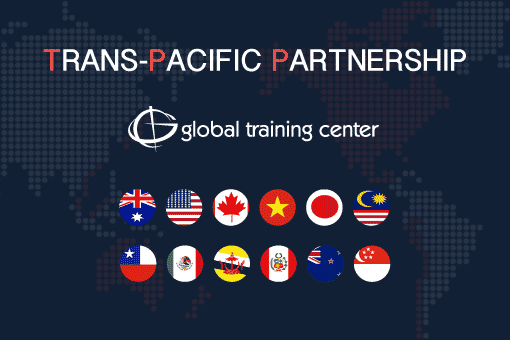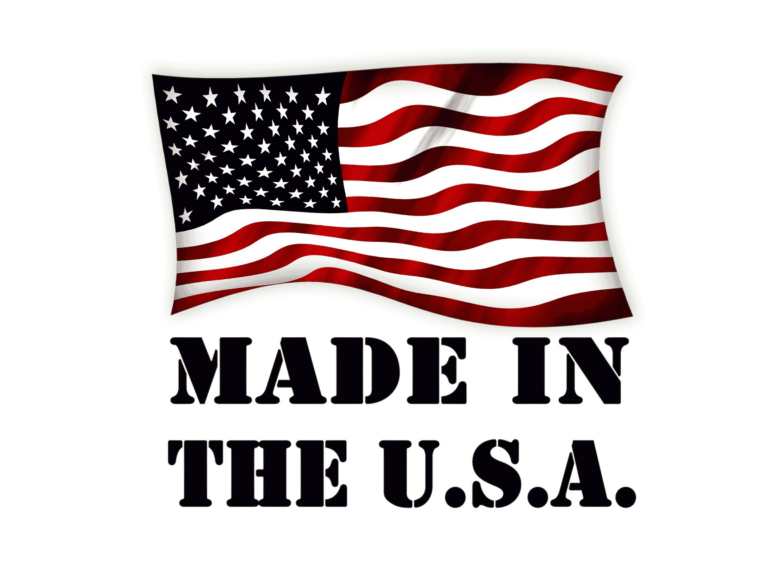A Conversation with Free-Trade Guru John Goodrich
Recently I had an opportunity to sit down with John D. Goodrich, an expert in U.S. trade compliance and a specialist in trade agreements. The topic of our discussion centered on the recently-signed Trans-Pacific Partnership Agreement (TPP). Following are excerpts from our conversation.
For those of you still unfamiliar with the agreement, it is a momentous treaty. It establishes the largest free-trading block in the world representing 40% of the global economy. Its membership includes Australia, Brunei, Canada, Chile, Japan, Malaysia Mexico, New Zealand, Peru, Singapore, the United States, and Vietnam. The full text of the agreement is available at the TPP document depository in New Zealand. Additional analysis is available through the U.S. Trade Representative’s website.
GTC: Why should companies be interested in the TPP? After all, it has not been ratified by Congress yet.
JDG: Although the road to ratification may be a rocky one, I am convinced the journey will be swift. The Malaysian Senate already voted to ratify the TPP. It is anticipated that Vietnam will follow suit quickly. Companies need to be prepared or they will be caught off-guard when their clients begin demanding TPP certification of origin statements.
GTC: You mentioned a rocky road toward ratification. What did you mean by that?
JDG: The TPP is a complex agreement that is not easily understood. At its core, it is a free trade agreement that eliminates duty and non-duty barriers to trade. These barriers were originally constructed to provide an advantage to special interests. It is natural that these special interests would take issue when the barrier is removed. I think most people, however, understand the benefits of trade and that providing protection to one portion of the economy comes at the expense of another. That said, the TPP is not a perfect agreement. It comes with some compromises. And as we saw from the recent announcement from the Speaker of the House, it may take some time to gain support for it within Congress.
GTC: What types of compromises?
JDG: Upon entry into force, the TPP will provide duty-free status to 75% of goods traded amongst the parties. Full implementation will bring that number up to 99%. Full implementation, however, will take as long as 15 years for some commodities. Some of the other barriers, such as safeguards will take even longer to relax and will not be eliminated fully. The implementation delay is a compromise. It is, however, a compromise that will allow protected industries time to become more competitive.
GTC: The news media is full of headlines talking about the negative impacts of TPP on labor, intellectual property rights, and investor-state dispute settlement also known as ISDS. What is your comment on these topics?
JDG: I am not one of those people to throw the media under the bus but the headlines don’t seem to do justice to the topic. I think the reporters are human too and some struggle to understand the TPP. There seems to be a tendency to provide false equivalencies giving extremists, pro or con, equal time with economic and legal experts. Look, I don’t think I am qualified to analyze those issues on my own. While I studied economics in college I am not an economist and I am not an attorney. I’m a trade compliance consultant and author. So when I don’t know something, I look to experts to help understand the issue.
On labor, what I’ve come to understand is that the TPP will create some job churn. One study I read estimates that TPP will displace about fifty thousand jobs in the U.S. each of the fifteen years of implementation as inefficient companies cut back. New jobs, however, are supplied by growth industries. This same study put it into perspective demonstrating that this job loss represents 0.1% of normal job churn in the U.S. economy. I don’t mean to diminish the effect on individuals but the overall impact seems to be pretty small. Clearly, however, this issue needs to be addressed by U.S. policymakers so that the burden of transition does not fall unfairly on the individuals losing their jobs.
One conservative study I read ventured that skilled labor will actually have a competitive edge over capital indicating that overall wages are expected to rise. This contradicts the common belief that the TPP will chase the lowest cost of labor within the TPP territory. Also on labor, you might be surprised to learn that TPP upholds and expands the rights of labor to organize freely.
On IPRs, the issue seems to be couched in terms of rich nations versus poor nations. Some go so far as to call this portion of the TPP economic colonialism. From my understanding, the TPP promotes the WCO’s TRIPS agreement that strives to provide minimum standards for protecting intellectual property. On the surface that seems like a reasonable goal.
ISDS seems to be the most contentious issue. I’ve read this portion of the TPP and read what the critics say. Some would characterize the ISDS portions of the TPP as a loss of sovereignty. From my understanding, the ISDS portion of TPP seems to be more about providing equal access to courts in other countries. The U.S. already recognizes foreign nationals in U.S. courts and decisions are made transparently and according to the rule of law. TPP seeks to allow U.S. companies the same privilege as other countries.
Again, I am not an expert on these three topics. This is what I have come to understand. My real interest in TPP is how companies are going to engage in it within their supply chains.
GTC: OK, how will companies engage the TPP?
JDG: The TPP does not replace the existing free trade agreements the U.S. has with Australia, Canada, Mexico, Chile, Peru, and Singapore. I think, however, it will displace their use. The key questions companies will have to answer are:
- What new opportunities will TPP present in the countries of Brunei, Japan, Malaysia, New Zealand, and Vietnam?
- Will TPP be more beneficial compared with existing agreements?
- When should the company transition to the TPP?
GTC: And what are the answers to those questions?
JDG: Of course, the answers will be different for each company. I think what most companies will learn is that the cumulation mechanisms within the TPP that aggregate originating content across all parties will provide benefits beyond those they already experience within the existing trade agreements.
I think users of the NAFTA, in particular, are going to be relieved that the TPP specifically prohibits denying participation based on a mere technical error within a certificate of origin.
GTC: What other benefits will TPP users enjoy?
JDG: The TPP is a dynamic agreement that allows other countries to participate. Already countries such as Colombia, Indonesia, The Philippines, South Korea, Taiwan, and Thailand have indicated an interest in ascending to the agreement. The benefits will continue to grow for participants.
GTC: Are there other benefits TPP will offer participants?
JDG: It may seem silly, but when I read the lofty analysis of the TPP I think the analysts overlook the value of the administrative savings of dealing with a single agreement as opposed to a multitude of agreements. Too many companies opt out of FTAs simply because they do not have the time or the expertise to participate. Consolidating the free trade agreement process under a single agreement will allow companies easier access to free trade. I think most companies will find the TPP rules of origin will help them streamline their back office processes while raising accuracy and confidence in participation within this FTA.
I realize this isn’t very glamorous, but often the opportunity is in the details. I’m looking forward to helping my clients navigate those details.
GTC: Thank you for your time, Mr. Goodrich.
Global Training Center has enjoyed a long-standing professional relationship with Mr. Goodrich, as an instructor of GTC courses and the author of several of our course books. If you would like to learn more about the TPP, GTC is taking reservations for onsite instruction with your company or trade organization.








